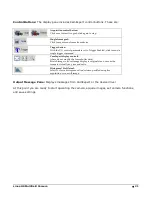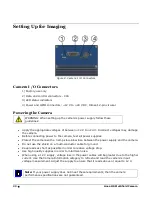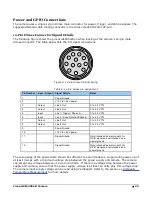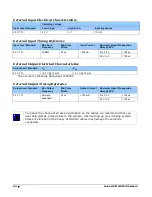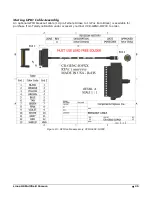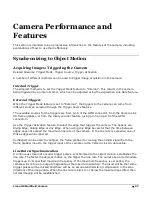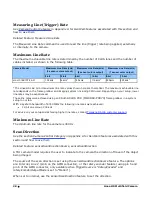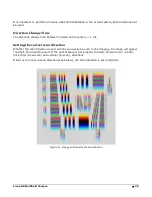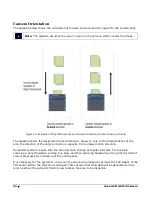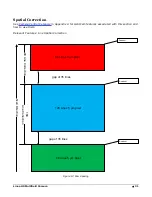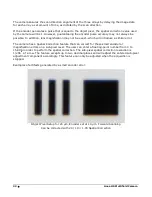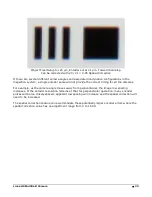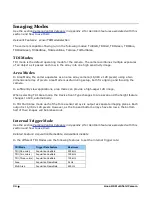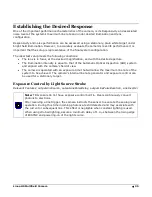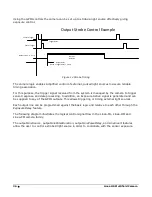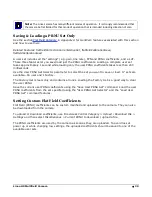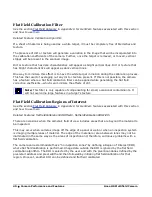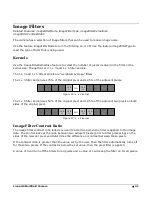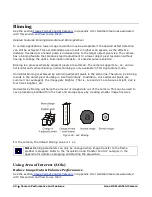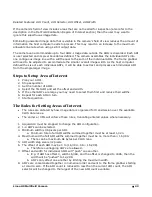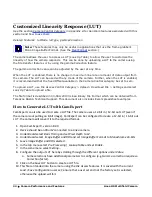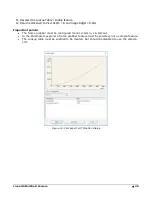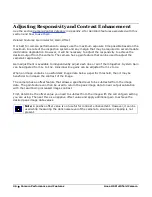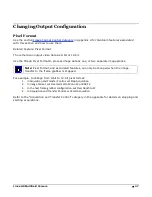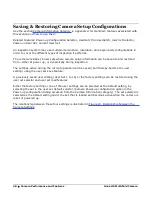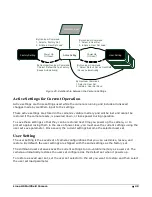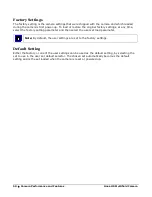
Linea HS Multifield Camera
•
35
Establishing the Desired Response
One of the important performance characteristics of the camera, is its Responsivity and associated
noise level at the system’s maximum line rate and under desired illumination and lens
configuration.
Responsivity and noise performance can be assessed using a stationary, plain white target under
bright field illumination. However, to accurately evaluate the camera’s real-life performance it is
important that the setup is representative of the final system configuration.
The ideal test setup meets the following conditions:
•
The lens is in focus, at the desired magnification, and with the desired aperture.
•
The illumination intensity is equal to that of the Automatic Optical Inspection (AOI) system
and aligned with the camera’s field of view.
•
The camera is operated with an exposure time that will allow the maximum line rate of the
system to be achieved. The camera’s internal line rate generator and exposure control can
be used for a stationary target.
Exposure Control by Light Source Strobe
Relevant Features: outputLineSource, outputLinePulseDelay, outputLinePulseDuration, LineInverter
Note: TDI sensors do not have exposure control built in. Pixels continuously convert
photons to electrons.
After receiving a line trigger, the camera instructs the sensor to execute the analog read
operation. During this time incoming photons are still detected and may associate with
the current or subsequent line. This effect is negligible when constant lighting is used.
When using strobed lighting, assure a minimum delay of 1.4
µ
s between the rising edge
of EXSYNC and powering-on of the light source.

